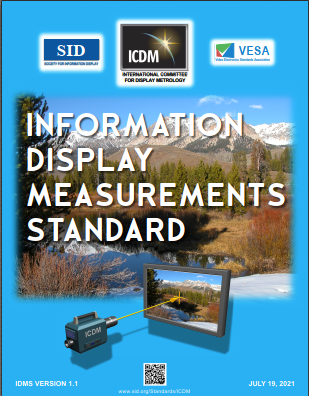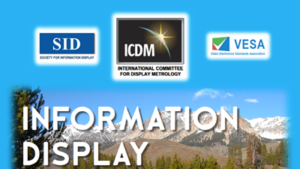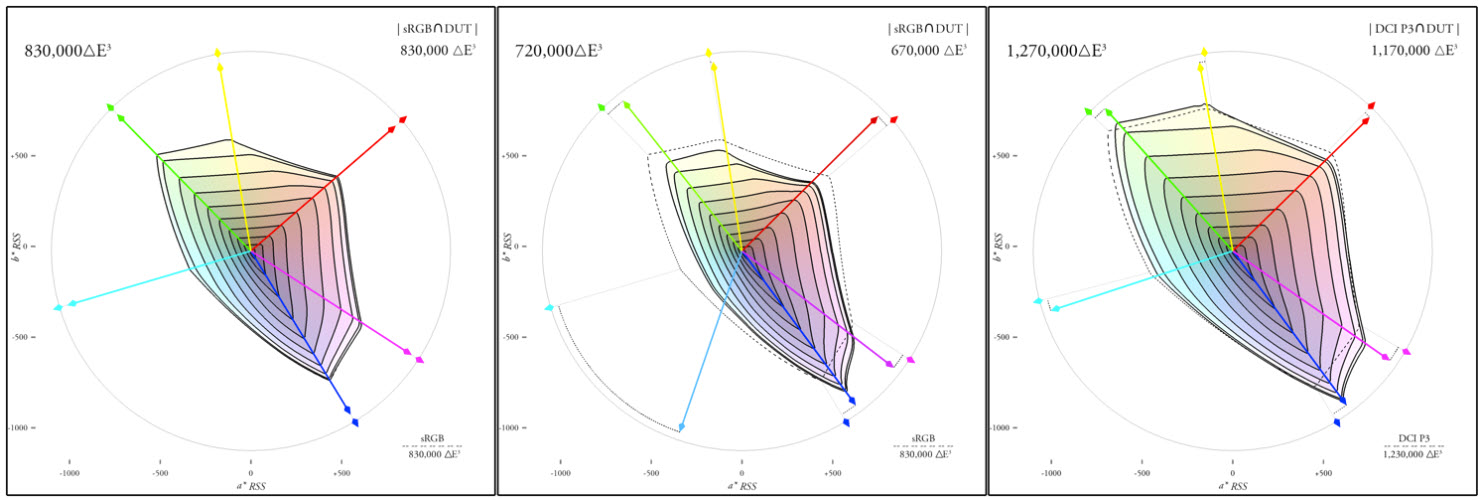One of my favourite sayings as a manager has always been “If you can’t measure it, you can’t manage it”. I’m not sure where the quote came from (Drucker and Deming are both widely identified as the source, although that doesn’t seem to be correct). However, if you have ever had any involvement in metrology, you’ll know that accurately and consistently getting measurements that tell you what you need to know is anything but trivial.

One of the great initiatives of the last couple of decades in the display industry was the development of the International Display Measurement Standard (IDMS) created by the International Committee on Display Measurement (ICDM). The Committee is long established as mainly a volunteer effort and was adopted by the SID which meant that it could properly create a formal standard. VESA was also a candidate to host it as it’s Flat Panel Display Measurements Standard (version 2.0) had been widely used since 2001.
The SID published the first version of the standard in 2012 and it was a very major piece of work at over 500 pages and covered many areas of display performance. I have a paper copy of the standard and unusually for such a major piece of work, the PDF version was freely available for download. There was no excuse for anyone if they chose not to know about it! At the time, I wrote:
“If everybody used a standard such as IDMS to prepare their specifications, the world would be a better place”.
Standards need revision over time and the first version often needs significant revision, but it has taken nine years to get to that point. Part of the long delay was just the difficulty of the technical task, but quite a lot of time was lost with organisational issues. The original version was delayed by some concerted action taken by vested interests that didn’t like parts of the standard that defined measurement processes which did not reflect (pardon the pun!) well on their products.
 This week the ICDM released the second version of the IDMS – version 1.1. You might think that a ‘dot release’ might not be significant, but you’d be wrong. There are more than 250 additional pages. I caught up on Zoom with Brian Berkeley – an Apple engineering management and display specialist for 20 years, a VP in Samsung’s display business in Korea and the US for 11 years, a former Secretary, Treasurer and President of SID and now an independent consultant – who co-ordinated the push to the line and production of V1.1. Johan Bergquist is the ICDM’s new editor and merged the old version with the amendments.
This week the ICDM released the second version of the IDMS – version 1.1. You might think that a ‘dot release’ might not be significant, but you’d be wrong. There are more than 250 additional pages. I caught up on Zoom with Brian Berkeley – an Apple engineering management and display specialist for 20 years, a VP in Samsung’s display business in Korea and the US for 11 years, a former Secretary, Treasurer and President of SID and now an independent consultant – who co-ordinated the push to the line and production of V1.1. Johan Bergquist is the ICDM’s new editor and merged the old version with the amendments.
There’s a Lot in It
With such a big boost in the size, there is a lot in the new standard and I haven’t been through it all, yet. As Brian was involved in merging the re-edited version of V1.03 with the completely new sections, he was able to give me a sense of the key changes (of course, if your product depends on a particular test or specification, you may have a different point of view!).
As a formal standard, there are public voting processes to ensure transparency and more than 50 votes were taken and details of who voted are viewable by SID members. 50 affiliated voters took part. All the changes were passed (as there had been a lot of work to get to consensus) and the lowest percentage of votes in favour was 96.7%
One of the points about Version 1 and is even more true of Version 1.1 is that as well as being a measurement standard, the document is both a glossary and a ‘technical backgrounder’ on display performance issues. For example, the HDR section does not yet include specific tests (and there is an argument about whether you need specific tests or not) but does do its best to define the terms used in different standards and technologies. It includes a definition of a standardised test signal. It’s primarily based on the PQ concept, but acknowledges the HLG approach. The new IDMS has forty pages devoted to HDR and that should be mandatory reading for anybody involved or just interested in the area.
As the Chinese say “The beginning of wisdom is to call things by their right names” and so if the terms used in the industry are based on IDMS, communication should be more accurate.
Since the last standard, there are applications such as ‘near to eye’ displays in augmented, mixed and virtual reality that have massively developed and 100 pages are devoted to the real challenges in trying to characterise and measure these kinds of devices.
Other areas that are new include sections in the ‘Uniformity’ chapter covering Mura Analysis (mura are a wide range of visible non-uniformities – 8.3) and ‘Display Sparkle’ – the visual effect of different anti-glare treatments. (In my days in the CRT monitor business, I often wondered how you would manage and specify this – different treatments had very different visual impacts but there weren’t any real metrics other than reflectance).
Transparency is also a significant development for some displays over recent years so the reflection measurement section (which had 12 voteable items) is now a reflection and transmission section. Light field displays are a topic of interest and again there has been a big boost – the content has doubled.
There is a new chapter that is a full backgrounder on colour (or color!) with features on topics that I have been writing about including observer metamerism and the importance of colour volumes, rather than relying on 2D colour representations. It also has sections explaining and defining how to create gamut rings, a topic that’s close to my heart (You Can’t Describe Colour Volume in 2D. Or Can You?). There is also a section that defines how to specify the coverage of different colour volumes (for example, what proportion of the P3 3D colour space that is occupied by a particular display, rather than a simple and often misleading 2D triangle plot).
Anyway, with version 1.1 now published, development of V1.2 will start. If you want to keep an eye on it, as a member of SID you can become an observer or if you want to commit time and resources to a particular area you can become a member with a vote. The plan is to get V1.2 out in less than nine years!
I plan to dig into many of the areas of V1.1 over the next few months – there’s plenty to look at.
Version 1.1 is free to download (how good is that?) here. I can imagine little better for some light (excuse the pun!) summer reading on the beach (although if you print it, it might cost a lot in excess baggage :-)) (BR)
(The article was slightly amended after publication to reflect the reasons for the delays and the correct credit for the merge of the old and new versions. The number of votes was 50, not 70 (which was the number of edit points and I added ‘yet’ to the lack of HDR specific tests. BR)


